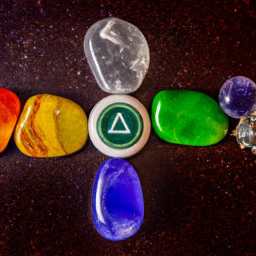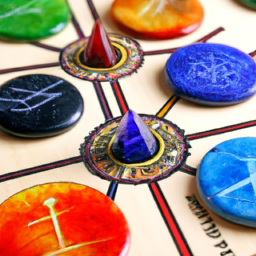: A Complete Introduction to Aligning Your Energy Centers
Chakras, in Hindu and Tantra traditions, refer to the seven energy centers in our bodies. These centers are believed to correspond to different aspects of our physical, emotional, and spiritual well-being. When our chakras are aligned and balanced, we experience a harmonious flow of energy, which leads to better overall health and a sense of inner peace.
However, in our fast-paced and stressful modern world, it’s common for our chakras to become imbalanced or blocked. This can manifest in various physical and emotional symptoms, such as chronic fatigue, anxiety, and even physical illnesses. The good news is, there are various practices that we can incorporate into our daily lives to balance our chakras and promote overall well-being. In this guide, we will delve into the basics of chakra balancing and how you can use it to improve your mind, body, and spirit.
The Seven Chakras: A Brief Overview
The seven chakras, also known as energy wheels, are located along the length of our spine, from the base of the spine to the crown of our head. Each chakra is associated with a specific color, element, sound, and emotional and physical aspects. Here’s a quick summary of the seven chakras:
- Root Chakra (Muladhara): Located at the base of the spine, this chakra is associated with the color red, the earth element, and the sense of smell. It is linked to our physical grounding, sense of security, and survival instincts.
- Sacral Chakra (Svadhishthana): Located below the navel, this chakra is associated with the color orange, the water element, and the sense of taste. It is connected to our creativity, sexuality, and emotions.
- Solar Plexus Chakra (Manipura): Located above the navel, this chakra is associated with the color yellow, the fire element, and the sense of sight. It is linked to our self-esteem, confidence, and personal power.
- Heart Chakra (Anahata): Located at the center of the chest, this chakra is associated with the color green, the air element, and the sense of touch. It is connected to love, compassion, and relationships.
- Throat Chakra (Vishuddha): Located at the throat, this chakra is associated with the color blue, the ether element, and the sense of hearing. It is linked to communication, self-expression, and truth.
- Third Eye Chakra (Ajna): Located between the eyebrows, this chakra is associated with the color indigo, light, and the sense of intuition. It is connected to our perception, imagination, and wisdom.
- Crown Chakra (Sahasrara): Located at the top of the head, this chakra is associated with the color violet, cosmic energy, and the sense of knowing. It is linked to our spirituality, connection to higher consciousness, and enlightenment.
Signs of Imbalanced or Blocked Chakras
When one or more chakras are out of balance, the prana (life force energy) cannot flow freely, leading to physical, emotional, and spiritual disharmony. Here are some signs that your chakras may be imbalanced or blocked:
- Physical symptoms, such as chronic pain, fatigue, and illness
- Emotional symptoms, such as anxiety, depression, and mood swings
- Feeling disconnected from your intuition or sense of purpose
- Difficulty maintaining healthy relationships
- Lack of creativity or motivation
- Low self-esteem and confidence
The Benefits of Chakra Balancing
By balancing your chakras, you can experience numerous physical, emotional, and spiritual benefits. These include:
- Improved physical health and energy levels
- Reduced stress and anxiety
- Enhanced emotional well-being and self-awareness
- Increased creativity and motivation
- Better communication and relationships
- Heightened intuition and spiritual connection
Ways to Balance Your Chakras
Now that you understand the basics of chakras and their importance in our overall well-being, let’s explore some ways to balance and align them:
- Meditation: This is one of the most effective ways to balance your chakras. By quieting the mind and focusing on your breath, you can connect with your chakras and visualize them spinning and glowing brightly.
- Yoga: Each yoga pose is associated with a specific chakra, and practicing them can help to activate and balance that energy center. For example, hip-opening poses can help to balance the sacral chakra, and heart-opening poses can open up the heart chakra.
- Aromatherapy: Using essential oils, such as lavender, sandalwood, and frankincense, can have a calming and balancing effect on your chakras.
- Crystal healing: Each chakra is associated with certain crystals, and placing them on the corresponding chakra can help to balance its energy. For instance, amethyst is often used to balance the third eye chakra, and rose quartz for the heart chakra.
- Affirmations: Positive affirmations that correspond to each chakra can help to shift negative thought patterns and promote balance and healing.
- Sound healing: Each chakra is also associated with a specific sound or mantra. Chanting these sounds or listening to them in a guided meditation can have a balancing effect on your chakras.
It’s essential to note that chakra balancing is not a one-time fix but a continuous journey. It’s crucial to incorporate these practices into your daily routine to maintain a healthy and balanced flow of energy in your chakras.
In Conclusion
Chakra balancing is a powerful tool for improving our overall well-being and achieving a more peaceful and fulfilling life. By understanding the seven chakras and incorporating practices like meditation, yoga, and aromatherapy into our lives, we can achieve a harmonious flow of energy and enhance our physical, emotional, and spiritual well-being. So why not start your chakra balancing journey today and experience the transformative power it can offer?





I’m looking for a comprehensive resource.
LizBaker: Great way to improve health and focus! #chakrabalancing
This looks like a great resource for understanding the fundamentals of chakra balancing!